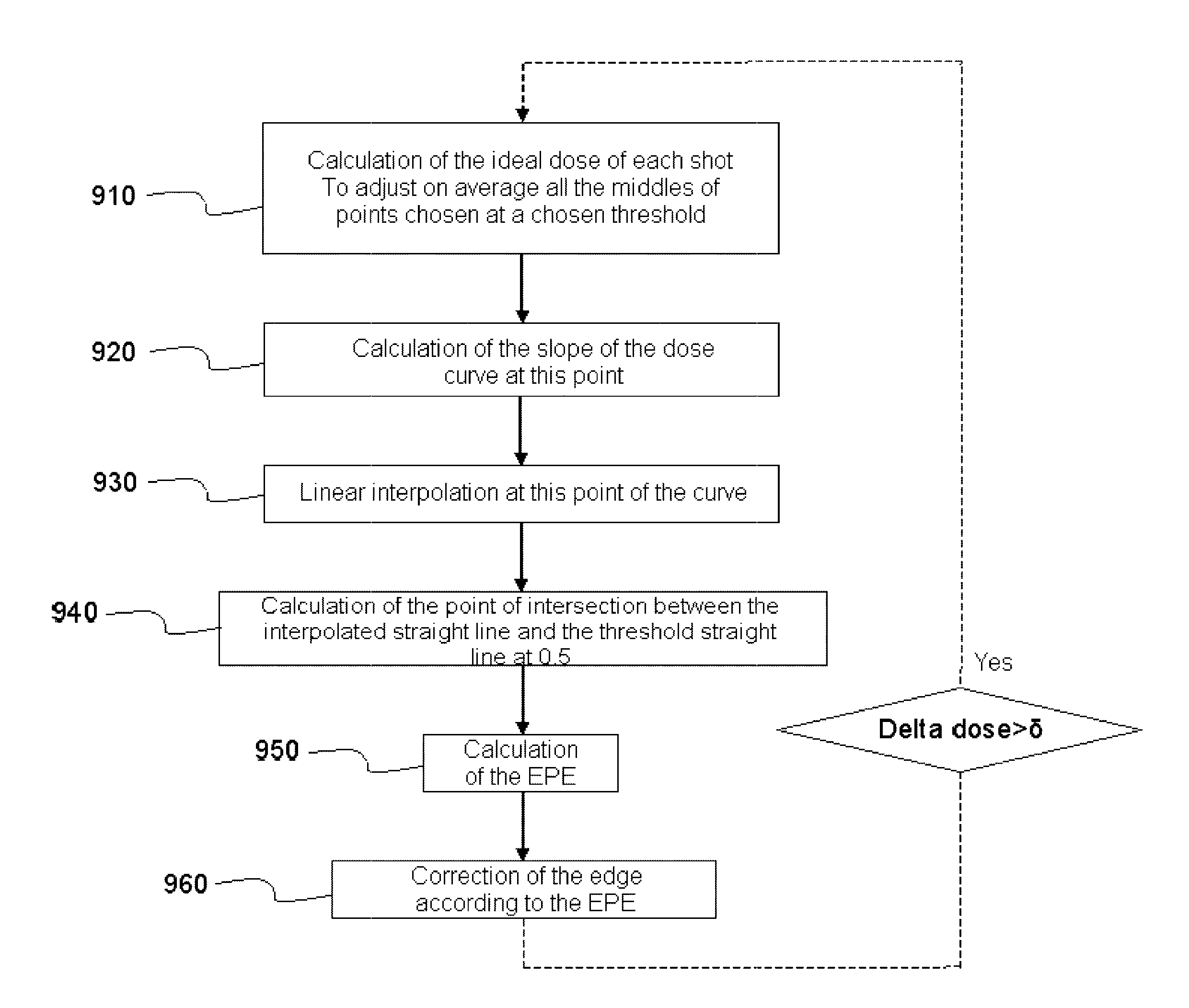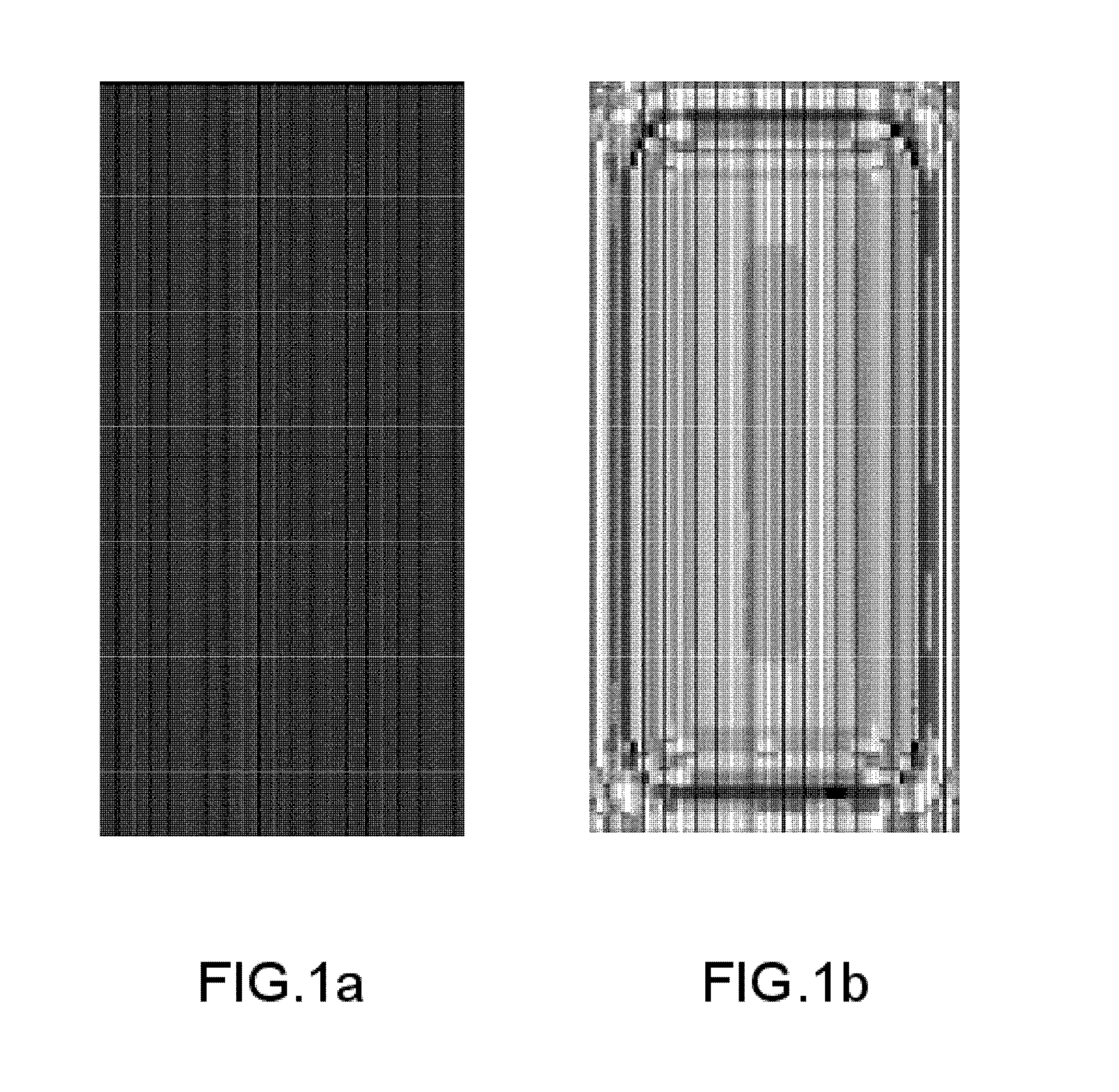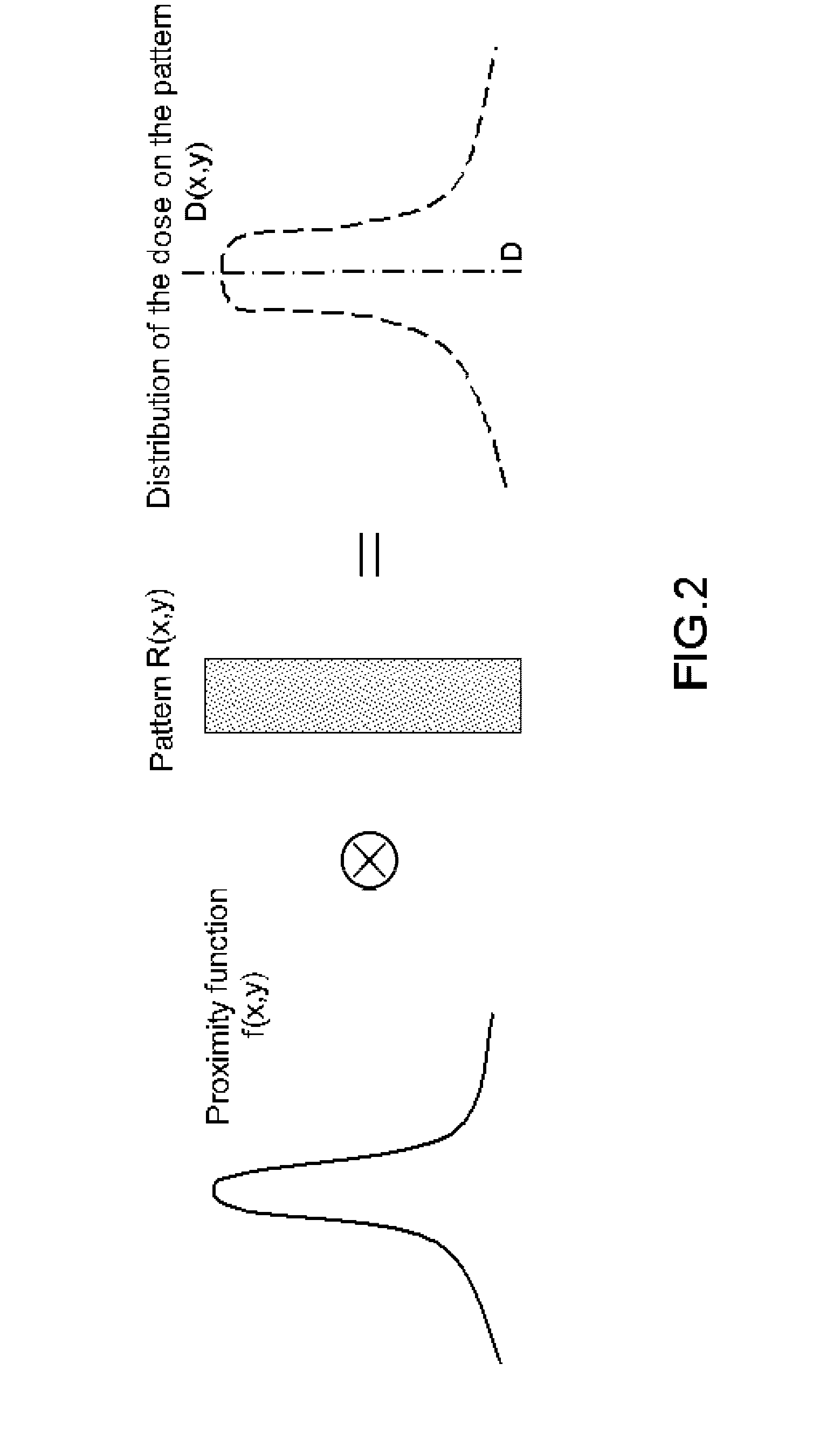Lithography method with combined optimization of radiated energy and design geometry
a radiated energy and lithography technology, applied in the field of electromechanical lithography, can solve the problems of high equipment and development costs of a new generation of technology, no viable solution envisaged, and high equipment costs, and achieve the effects of reducing energy latitude, reducing equipment costs, and increasing line end shortening
- Summary
- Abstract
- Description
- Claims
- Application Information
AI Technical Summary
Benefits of technology
Problems solved by technology
Method used
Image
Examples
first embodiment
[0061]FIG. 6 shows the radiation dose increases 611a, 612a, 613a, 614a, 615a (and their symmetrical points on the other edge of the network to be etched) which are applied by a prior art method and which can be eliminated by a method according to the invention of the radiated doses 611, 612, 613, 614, 615 (as well as the radiated doses on the other edge of the network of lines to be etched).
[0062]These reductions in doses to be applied are obtained by widening the geometry of the drawing to be etched in proportions illustrated by the straight line 620 and by applying a dose 616 on the outer part of the new pattern. However, according to the invention, the shots on the edges retain the same dimensions as at the middle of the pattern (1.6 μm×1.6 μm in the example of the figure), which reduces the number of shots and therefore the exposure time, for example, in the case of the figure, by around 29% compared to a solution of the prior art (the aggregate dose changes from 90 to 64 normal...
second embodiment
[0063]It is in fact found, by trial and error, that it is possible to eliminate the overdoses produced on the internal edges of the pattern to be etched, 611 to 615, without affecting the quality of the etched pattern. In this case, the exposure time saving is of the order of 62% (the aggregate dose changes from 90 to 34 normal doses). At the corners of the patterns, the saving is raised to the square and is therefore, in the above example, of the order of 86%. Thus, advantageously, according to the invention, the same dose is applied over the entire pattern and the added band is “overdosed”. This advantageous phenomenon is due to the fact that the added band allows at the same time to separate and to straighten the flanks of the dose curve as illustrated in FIG. 7, and do so in a much more effective manner than the increases in doses over a number of shots inside the pattern which have a lower efficiency because of the energy losses created by the proximity effects which interact a...
PUM
| Property | Measurement | Unit |
|---|---|---|
| sensitivity threshold | aaaaa | aaaaa |
| sensitivity threshold parameter | aaaaa | aaaaa |
| process energy latitude | aaaaa | aaaaa |
Abstract
Description
Claims
Application Information
 Login to View More
Login to View More - R&D
- Intellectual Property
- Life Sciences
- Materials
- Tech Scout
- Unparalleled Data Quality
- Higher Quality Content
- 60% Fewer Hallucinations
Browse by: Latest US Patents, China's latest patents, Technical Efficacy Thesaurus, Application Domain, Technology Topic, Popular Technical Reports.
© 2025 PatSnap. All rights reserved.Legal|Privacy policy|Modern Slavery Act Transparency Statement|Sitemap|About US| Contact US: help@patsnap.com



